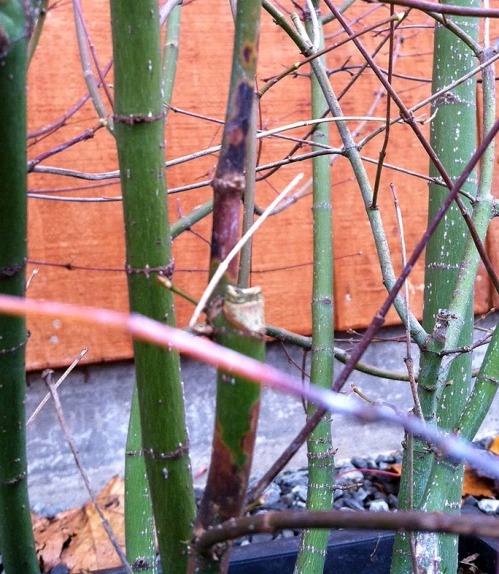Control is three-fold. The first is keeping your Japanese maples strong, healthy, and damage-free. The second and third are related: If you can keep your tree dry during wet and cold periods, that is half the battle. The other is chemical control, which is by copper sulfate or similar bactericide. ZeroTol (an oxygenator, essentially a very strong form of hydrogen peroxide) is excellent. Top spray and bottom drench is recommended.
If you have problems with this disease, try a chemical drench after repotting or after heavy root work. And if you live in an area with wet, cool weather in the fall through spring, seasonal prophylactic spraying is a sharp idea.
Clearing away leaves and especially seeds of maples—like bigleaf or vine maple—is essential after leaf fall as these commonly planted landscape trees are frequent carriers of the disease. Keep leaves and moss away from trunk bases, too.

The purply-black tissue damage of the Pseudomonas bacteria shown on this branch is typical of the disease.

0 comments:
Post a Comment